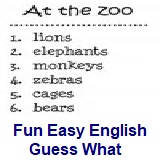 Guess What? Guess What?
Guess What? is part of the Activate: Games for Learning American English
collection. Guess What? cards can be used for a variety of games to practice making
descriptions in English and to learn English vocabulary. For this card game,
you will find downloadable cards, game instructions, and game variations. |
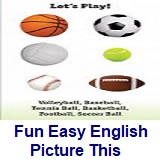 Picture This Picture This
Picture This is part of the Activate: Games for Learning
American English collection. Picture This cards are a set of cards that can
be used for a variety of conversation and word games in English classes. |
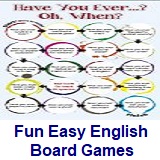 Board Games Board Games
Each game shows the path that the players must follow and the
English phrases that the players must produce orally. Each board game has a
theme that requires you to produce certain types of expressions, so
you practice a variety of vocabulary, grammatical patterns, and functional
meanings. |
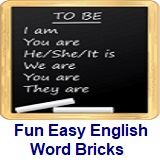 Word Bricks Word Bricks
Word Bricks are used for
building sentences in English. The Word Bricks have a wide range of words in
English written on them: nouns, verbs, adjectives, adverbs, articles,
pronouns, and so on. |
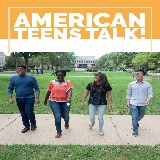 American Teens Talk! American Teens Talk!
Americans Teens Talk! is a collection of interviews of
American high school students. These
interviews come with audio programs. |
 About the U.S.A. About the U.S.A.
About the U.S.A. is an American Studies reader that
examines the customs, government, and history of the
United States of America. 135 pages
- opens to a new PDF window. |
 About
America About
America
Learn about the fascinating history and government of
the United States of America. Lessons include content on
American Government, American History, and Integrated
Civics. Handouts with interactive games. |
 U.S.
Citizen U.S.
Citizen
U.S. Citizenship and Immigration Services (USCIS) offers
lesson plans for ESL instructors preparing students for
U.S. citizenship. A lot of really good information. |
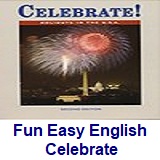 Celebrate! Holidays in the U.S.A. Celebrate! Holidays in the U.S.A.
Celebrate! Holidays in the U.S.A. discusses the ten
federally-recognized holidays in the United States, as
well as many celebratory days. Good information about
American culture. |
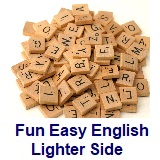 The Lighter Side The Lighter Side
The text
includes word games, crossword puzzles, idioms, limericks, jokes, riddles,
and international folk tales. These lessons are similar to the lessons
above but without audio programs. |
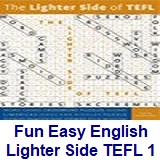 The Lighter Side of TEFL
1 The Lighter Side of TEFL
1
The text includes word games, crossword puzzles, idioms,
limericks, jokes, riddles, and international folk tales. These
lessons come with audio programs. |
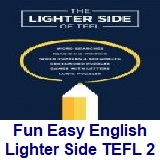 The Lighter Side of TEFL
2 The Lighter Side of TEFL
2
The Lighter Side of TEFL contains puzzles grouped into
categories by type. 108 pages
- opens to a new PDF window. |
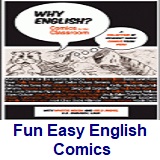 Why English? Comics for the Classroom Why English? Comics for the Classroom
These stories provide an enjoyable opportunity to
increase vocabulary, reading comprehension, listening,
speaking, and writing. These
comics come with audio programs. |
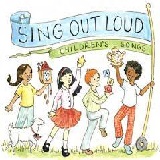 Sing Out Loud Children's Songs Sing Out Loud Children's Songs
Sing Out Loud Children's Songs includes popular children's songs in the U.S.A. Posters accompany the
individual Sing Out Loud Children's Songs. These
songs come with audio programs. |
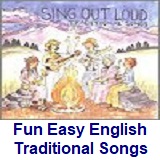 Sing Out Loud Traditional Songs Sing Out Loud Traditional Songs
The Sing Out Loud Traditional Songs
collection contains 13 traditional American folk songs and song lyrics.
Listen to the songs online, read the lyrics, and collect the posters that
accompany the songs. These
songs come with audio programs. |
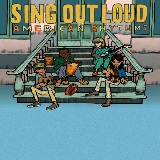 Sing Out Loud American Rhythms Sing Out Loud American Rhythms
Do you love music? Want to use it to learn English?
Check out the hip-hop inspired song "Peace" from Sing
Out Loud American Rhythms. These
songs come with audio programs. |
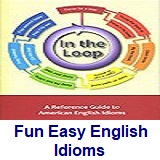 In the Loop In the Loop
In The Loop is a reference guide to American English
idioms. Learn the meaning of American idioms.
134 pages - opens to a new PDF window. |
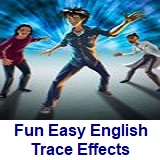 Trace Effects Trace Effects
Trace Effects is an English language comic for students.
Who is Trace? Trace, the main character, is a university
student from the year 2045 who has accidentally traveled
back in time to the present. |
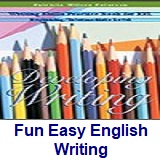 Developing Writing Developing Writing
Developing Writing is a reading and writing skills text
designed for beginning to intermediate learners of
English. 157 pages - opens to
a new PDF window. |